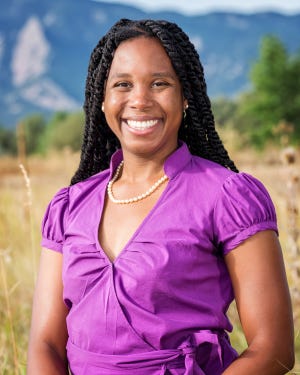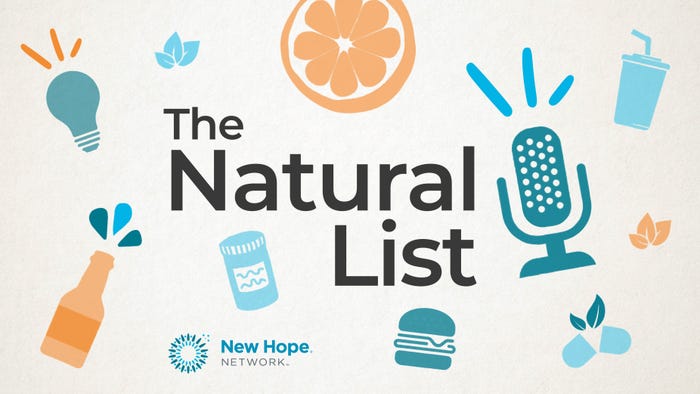7 ways to promote supply chain diversity
Working with diverse-owned suppliers improves equity, inclusion and profitability.
July 30, 2021

Fostering inclusive environments is better for everyone.
It increases employee engagement and reduces their likelihood of leaving, the Society for Human Resource Management finds. Nearly 70% of employees and job seekers say a diverse workforce is an important factor when evaluating companies and job offers, according to Glassdoor’s Diversity and Inclusion Workplace Survey.
But being more inclusive is also better for the bottom line. Companies in the top quartile for gender diversity on executive teams were 21% more likely to outperform on profitability and 27% more likely to have long-term value creation per McKinsey’s 2018 Delivering Through Diversity Report. Those with the most ethnically and culturally diverse boards are 43% more likely to experience higher profits.
“We can't collectively deliver on our goals, unless the majority of the collective are actually at the table, have the resources that they need to thrive and have the ability to be part of the conversation,” says Arielle Moinester, program strategist of Women’s Earth Alliance.
Regardless of a company’s size, structure or culture, there are ways to implement justice, equity, diversity and inclusion practices.
One Step Closer J.E.D.I. Collaborative (which stands for justice, equity, diversity and inclusion) has a 10-step guide to help companies within the natural products industry be more proactive.
Take a “J.E.D.I. lens” and try to commit to nontraditional suppliers and distributors for your base resources, says Cynthia Billops, vice president of operations, membership and belonging for One Step Closer (OSC), a nonprofit in the natural products industry that formed to tackle industry challenges.
“Think about who your vendors are and who you are working with,” says Nikki McCord, founder of McCord Consulting Group which offers business consulting including diversity training. “Be deliberate. See where diversity, equity and inclusion fits into multiple aspects of your business.”
Below are seven more suggestions from innovators within the natural products industry to help you create a more diverse, equitable and inclusive supply chain.
Define company values on diversity, equity and inclusion
 A company should start by thoughtfully defining its internal values on diversity, equity and inclusion. Don’t rush it through, McCord (right) says.
A company should start by thoughtfully defining its internal values on diversity, equity and inclusion. Don’t rush it through, McCord (right) says.
“There’s needs to be a balance between urgency and doing it thoughtfully,” McCord says, to make sure programs and initiatives are sustainable.
“It's important that you build a foundation,” she says. “And you authentically integrate this into your practices, so that we're not having the same conversation in the next five years.” If a company asks an employee to work on improving diversity, equity and inclusion and it’s not in their formal job description, they need to be paid for their time.
“This isn’t like giving OSHA training where you are presenting new regulations to keep employees safe,” she notes, because doing DEI training is both emotional and complicated.
“Part of the process is creating a space where people can ask questions,” says McCord, whose job as a facilitator is to help people evolve from a hurtful way of thinking.
Seek out diverse partnerships
Understand that the supply chain is diverse, says Errol Schweizer, who spent 14 years at Whole Foods including a seven-year stint as national vice president of grocery managing $5 billion in product sales across 75 categories.
 “That’s a big misconception,” says Schweizer (left), who hosts a podcast called The Checkout and serves as a mentor, advisor or board member to approximately 25 natural product companies. “When you’re thinking about logistics, fulfillment, retail, wholesale, farmer workers, processing workers—it’s a very diverse group of folks who are actually doing the work.”
“That’s a big misconception,” says Schweizer (left), who hosts a podcast called The Checkout and serves as a mentor, advisor or board member to approximately 25 natural product companies. “When you’re thinking about logistics, fulfillment, retail, wholesale, farmer workers, processing workers—it’s a very diverse group of folks who are actually doing the work.”
Companies need to look at ownership and governance: who is benefiting and who is making the decisions. “We have an incredibly large amount of diversity in this country, just not in leadership and ownership in the natural products and larger food industry,” he says.
Review who is making decisions at an executive role both internally and externally.
“Look at the very top, it’s completely racially segregated when you look at it on just a wealth basis,” Schweizer says. “That’s what we call racialized capitalism. The main beneficiaries are primarily still white people and the folks doing most of the work are Black and Brown.”
Scrutinize the bid processes
“Look at your own bid process,” Schewizer says.
Review how your company is sourcing products, raw materials and ingredients. Review the framework for purchasing decisions. Is it based only on the lowest cost or what is the best quality available?
Are questions about diversity and justice coming up when sourcing products about how workers are being treated and paid? Look at who owns the suppliers as well as the raw material companies.
Is there employee ownership, collective bargaining or unionization? “There is solidarity where workers are able to band together to improve to lot in the supply chain,” Schweizer says.
Update the RFP with questions about diversity and equity to vet suppliers
Fair Trade doesn’t cover most domestic products and only covers a few categories that are imported. “We don’t have good regulations and laws to protect workers,” Schweizer says. “Include these questions in your RFP and bid process with suppliers.”
Schweizer suggests asking suppliers: “Are your workers paid overtime, after 40 hours? What is their base pay? What's your turnover rate? What are your COVID-19 and food safety, workplace safety precautions? Have you ever had anybody ever filed an OSHA complaint?”
Labor abuses are well documented in the food industry, but companies can work with suppliers who partner with farmworker and immigrant rights organizations such as the Coalition of Immokalee Workers' (CIW) Fair Food Program, which Schweizer calls one of the most effective social justice certifications around labor.
“Its program is much stronger than fair trade because it’s a legally binding agreement and there are repercussions for violating the agreement,” he says. “And the standards are developed by the farmworkers themselves who are the experts because they understand what goes on at farms.”
Similarly, Migrant Justice improved working conditions through legally binding enforceable agreements to protect workers’ human rights via its Milk with Dignity program. Ben and Jerry’s is part of the program that now includes more than 60 dairy farms in Vermont and New York.
Ask vendors about designations
Review and ask vendors if they have any special business designations.
Ask the vendor or organization if they are a certified minority-owned business, a woman-owned business, a veteran-owned business, McCord says. Then ask them about their values regarding diversity, equity and inclusion.
Ask what their commitment is to diversity and if they have defined their values. If they haven’t, what work are they doing to become a more inclusive organization?
More importantly, companies have to decide what they are going to do with that information once they get it, she says. Ideally, they seek out businesses that align with their values instead of making exceptions.
Identify women leaders and include them in discussions
More women need to be involved in leadership discussions and decision making processes so they can receive resources, training and be a part of the conversation. This will allow more women to have access to financing, a network of other leaders to scale and strengthen solutions, Moinester says.
“When you go into the field, you see over and over that women are doing over half of the work,” Moinester says. “And yet they weren’t at the table, so they weren’t getting access to microfinance and agricultural inputs and weren’t in decision making conversations.”
Look at the work of Project Drawdown other supply chain solutions to help with climate change while improving equity and diversity.
“If women had the same access to resources as men in the farming space, we could actually increase production globally by 20% to 30%, and 150 million more people would not go hungry,” Moinester says. “Investing in women’s education and leadership is one of the leading solutions to climate change.”
Companies should also look at Planet Forward, a global staffing and recruiting company that can help companies strategize how to be more diverse and inclusive before implementing a new plan, Billops says.
Prepare to make mistakes
When trying to be more diverse and inclusive, be prepared to make mistakes.
“It’s important to understand you will mess up,” McCord says. “Have a strategy in place and figured out what you’re going to do when you inevitably mess up.”
Companies need to prepare for feedback, McCord says, and know how they are going to take that information and build upon it. Create a plan for when someone points out a problem or when new language is implemented to replace certain terms with others; it’s better for a company to publically admit they messed up, than be silent or defensive, McCord says.
About the Author
You May Also Like




